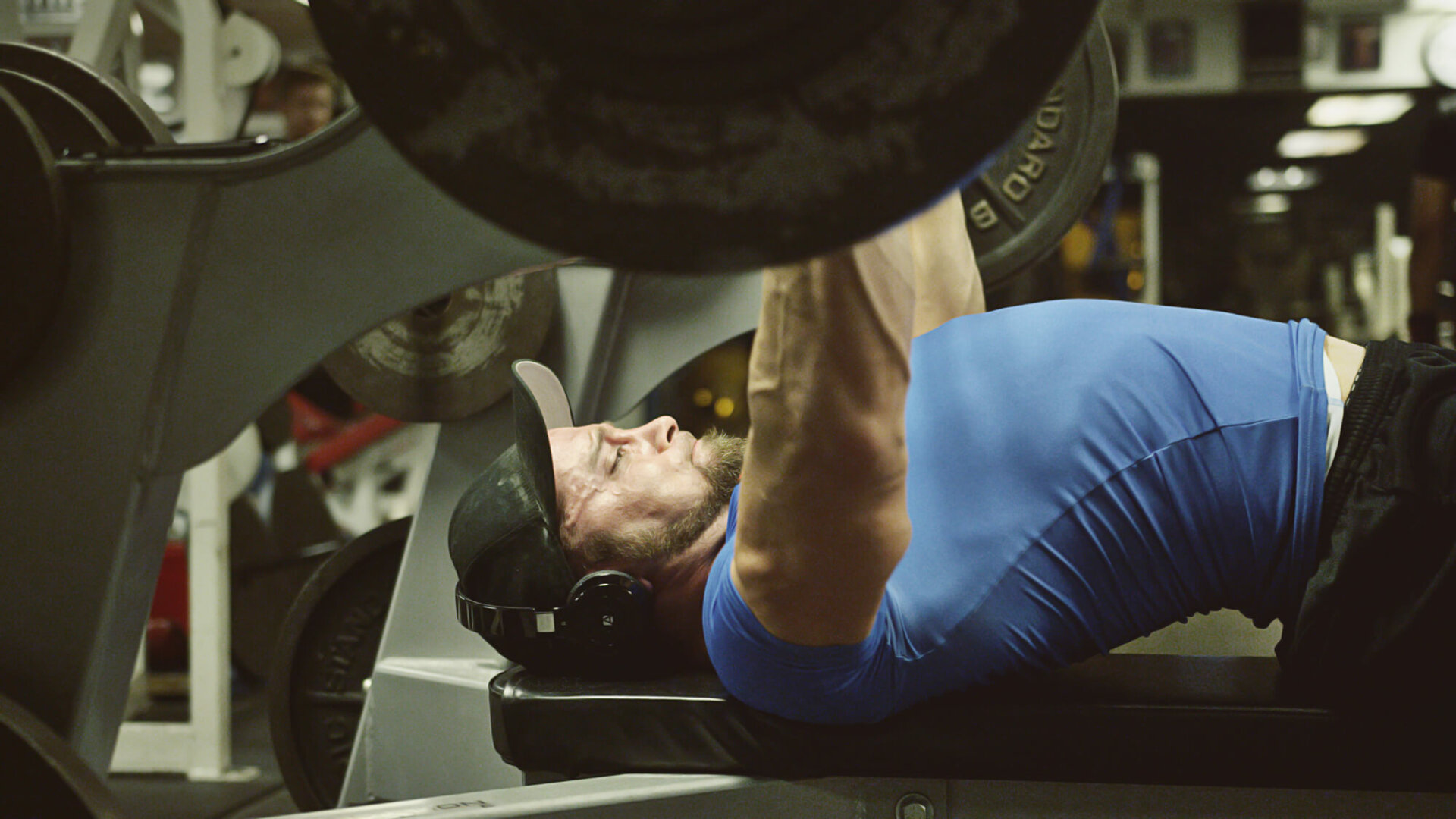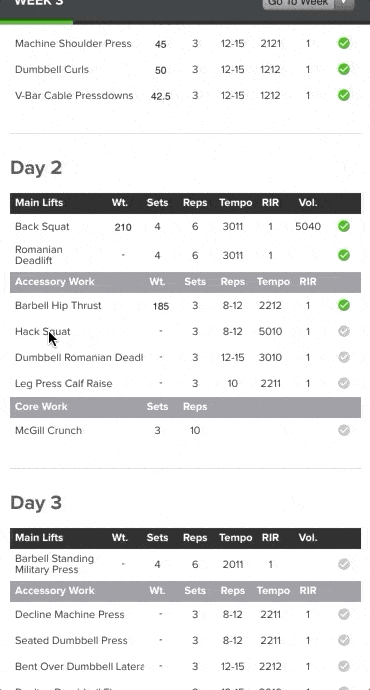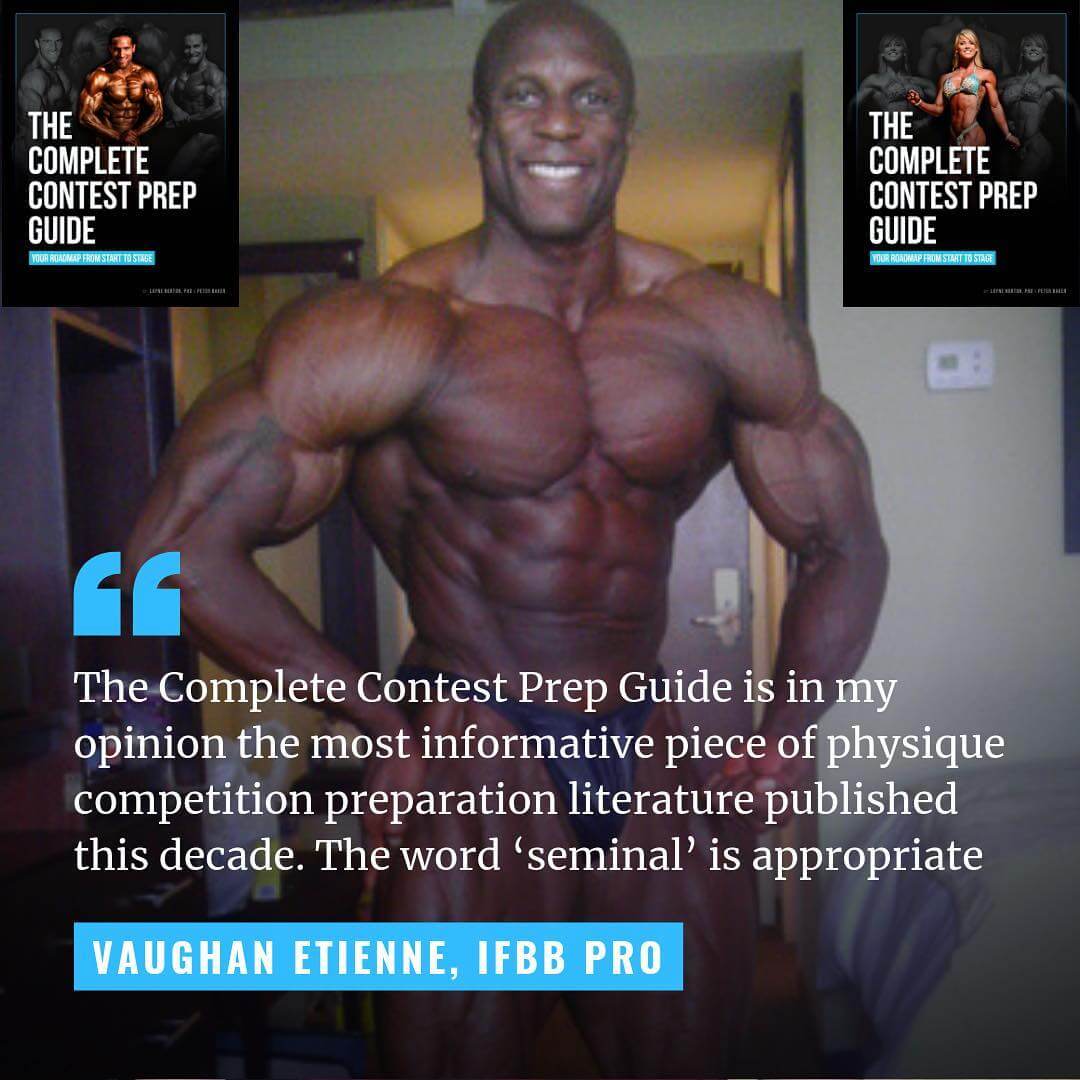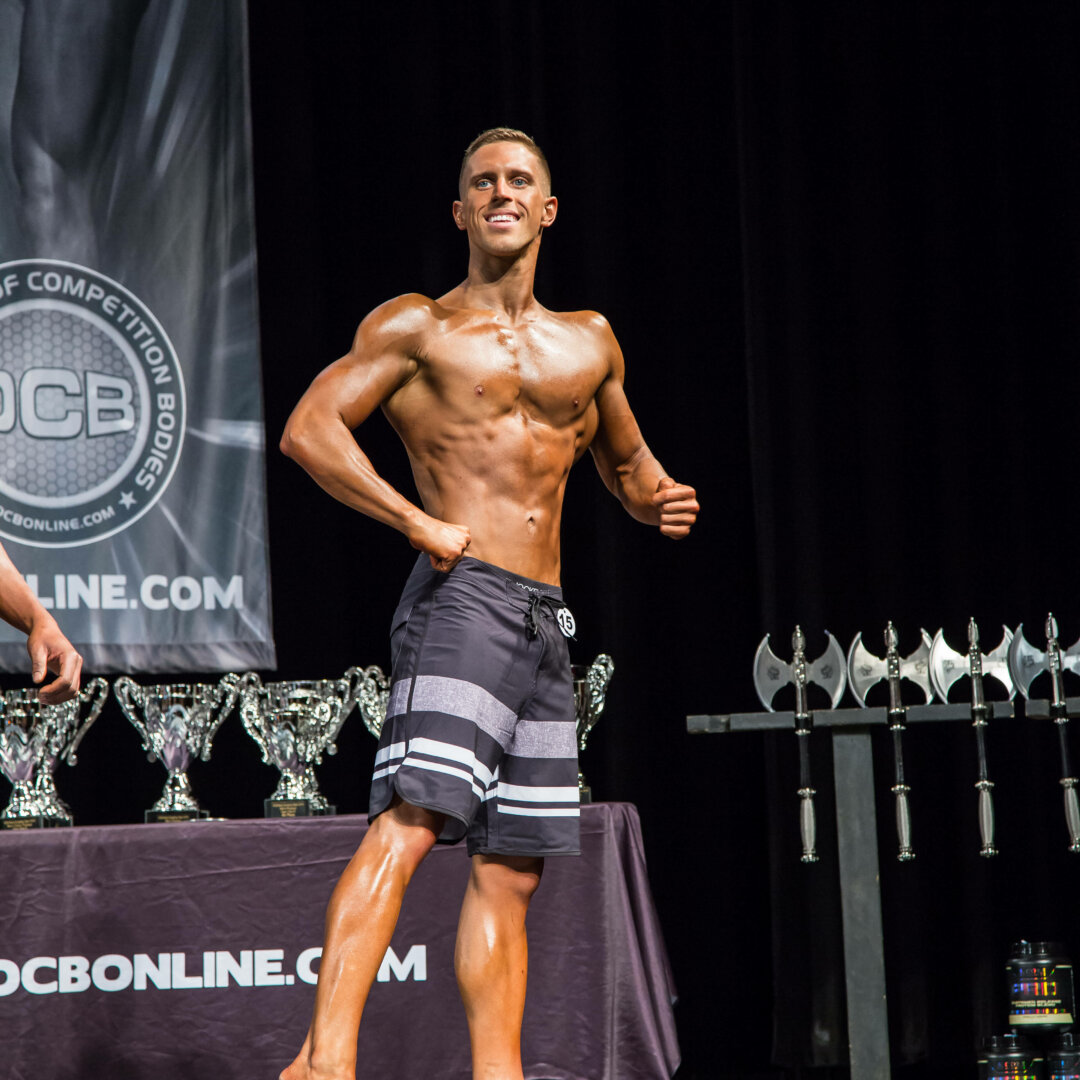We all love when a plan comes together, and for most of us here, we all put a considerable amount of time and effort into developing the very best, most personalized program to get bigger and stronger. Unfortunately, as the famous quote goes, even the best laid plans of mice and men often go awry.
Modern rephrasing—crap happens.
Even more unfortunate, when that crap does happen and we can’t follow our plan to a T, far too many throw the baby out with the bathwater in frustration, and leave a lot of progress on the table by not making the most out of unexpected circumstances. One of the most common is when faced with an incredibly crowded gym, or worse yet, an incredibly tight schedule along with that crowded gym. Sometimes we just can’t follow our program exactly as planned, but that shouldn’t mean we don’t have a well thought out backup strategy to maximize the resources we have available.
Rather than getting frustrated when we can’t complete our workouts exactly as expected and either giving up and going home altogether, or simply winging it with a pitifully executed, random assortment of exercises, I’m covering some scientifically backed, experientially proven strategies I use and suggest to my clients in helping maximize the back up plans we have in place for when things don’t go as planned I the gym.

Movement Patterns
As with most areas of knowledge-based development, approaching issues with a foundational understanding of principles allows us to grow and learn far better than trying to replicate hard and fast, specific rules. That’s why this article is focused more on covering general considerations that are most helpful in then applying to your specific situation, rather than laying our actual ‘back up workouts.’
If you’re unable to perform the specific exercises you had programmed for a workout, I encourage clients of mine, and those that reach out for advice, to think of their ”Plan B” in terms of movement pattern similarities, rather than specific alternatives for each planned exercise. One of the biggest reasons for this is, implementing a backup exercise with a similar movement pattern can help us stay in a better groove for when we’re back to our regularly scheduled program, which I’ll talk about more below. The other is, it gives us more options to choose from when the gym is crazy busy or a machine is out of order, rather than forcing a certain back up exercise that may be just as difficult to access.
If we’re originally programmed to perform walking dumbbell lunges, but the gym is just way too busy to have that much room, we can easily choose another unilateral, split stance movement that takes up less room and we’re able to find a spot for in the gym like
- Bulgarian Split Squats with a dumbbell or in a Smith Machine
- Reverse Lunges in a Smith Machine
- Stationary lunges with dumbbells
The best part is that all of these are virtually the same exercise, they take up far less room in a crowded gym, and can be easy to access in place of walking lunges.
Almost any given exercise has several practical variations we can implement. Of course the exercises we have planned are ideal, but at least getting in an exercise with a similar movement pattern (think; hinge, squat, pull, push, flexion, extension etc.) can help us stimulate the target muscle groups to a similar degree of what we had planned, to keep growing like we want. Doing a completely dissimilar exercise, while productive in its own right, won’t allow for the same or even a similar stimulus based what our current training priorities may call for.
Do the lunge variations I mentioned hit our lower body exactly the same? No. Any time we’re tweaking the execution and movement pattern, we’re tweaking the emphasis across our muscle groups. [1] But performing a variation of a lunge is going to allow you a nearly identical stimulation rather than getting pissed off you can’t do your walking lunges like you wanted, using it as an excuse to rock out a few sets of leg curls and extensions, then go home without nearly the same quality workout under your belt. Not to mention, the next leg day that includes walking lunges, you’ll have kept in a much better groove to pick back up where you left off, which brings me to my next point.
Motor Patterns
With any type of skill, the more we practice it, the better we get at properly, consistently executing it. [2] It’s important to appreciate the fact there’s a considerable neurological component to successful strength training execution, and that consistently practicing a given exercise can allows us to maximize that neurological efficiency. [3]
This is another reason I strongly encourage my clients to swap “like for like” when they have to call an audible in there workouts. Even if we can’t perform the exact exercise, we’re most focused on practicing and improving on for our particular strength & hypertrophy goals, at least performing one with as similar a movement pattern as possible can help us better maintain that neurological efficiency. [4] The better we can stay in our groove as it relates to our motor pattern, the more time and energy we can place toward actually progressively overloading in that movement- rather than constantly having to partially “relearn” it. [5]
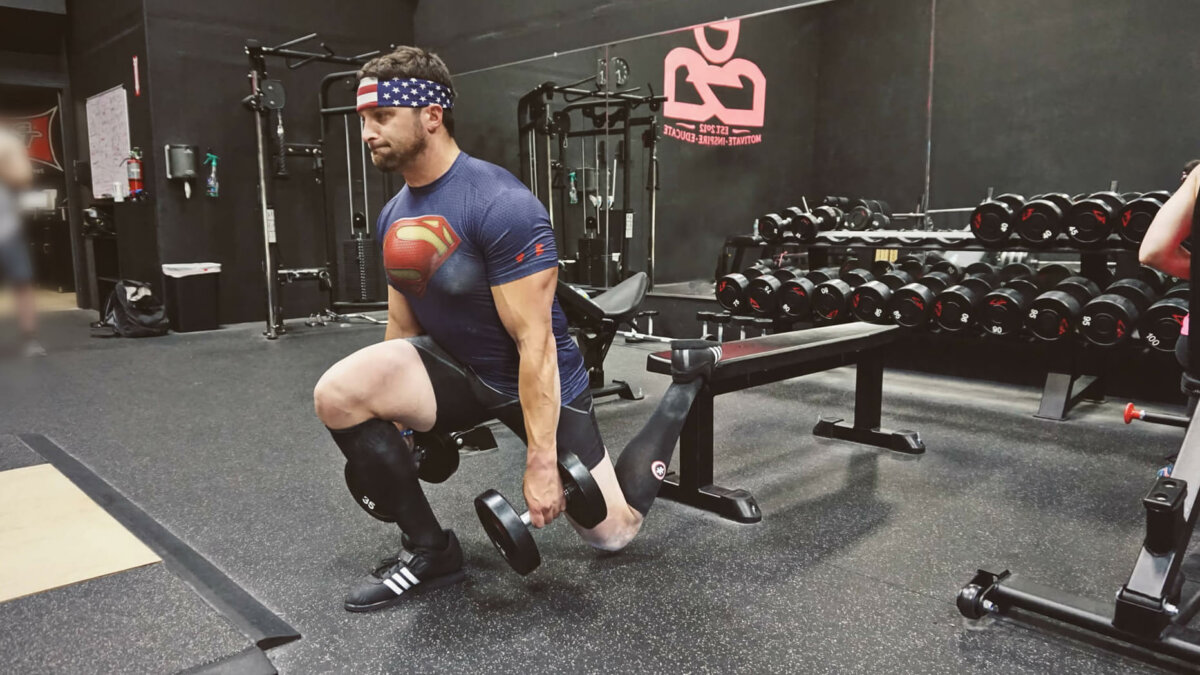
Perform walking lunges for the first time and you’ll likely feel (and honestly, probably look) like a doe learning to walk for the first time. A few sessions under your belt though, they’ll start feeling like second nature, as you’re then able to progressively add reps and weight from week to week.
Take several weeks off of lunge variations though, and sure that skill will come back once you return, but not until you spend a few sessions re-acquainting yourself to the specific motor pattern required for the movement. The more often you have to re-acquaint, the more time you’re spending away from actually progressing in that movement as well as you otherwise could have.
Sure, we can’t always perform the exact movement we want to avoid that relearning period later, but the closer we can mimic it with our back up exercise, the greater we mitigate the discrepancy and allows ourselves to progress as well as possible despite the less ideal gym situation.
If you’re using the BioLayne Workout Builder, this is even easier to do. Simply use the exercise exchange feature to swap in movements that are available during those busy gym sessions, and you’re ready to rock and roll with minimal interruption.
Volume Maintenance
Swapping in exercises that mimic the movement patterns and muscle emphasis we’re most trying to develop, and considering movement patterns similar to those we’ve been “learning” to maintain neuromuscular efficiency go a long way in making the most of a bad gym situation. Likewise, the other major consideration I always try to encourage for athletes is to try and closely match the total training volume they originally had planned for a given session, even if through a different set of exercises.
This typically ends up being best accomplished by performing fewer total exercises, with more sets per exercise than we may have initially had programmed. This entire article is focused on navigating busy gyms while making the most of our impromptu programming changes. If you’re faced with an insanely busy gym, it stands to reason that the 5+ leg exercises you had planned may not be very practical to navigate your way through and wait on becoming available.
When the gym’s busier than a club on single’s night, I’ll typically choose the two or three major movements I’m prioritizing at that given time, condense my exercise selection down accordingly, then complete however much training volume I had planned through more sets or fewer movements.
For sake of clarity, let’s review a simple example. Say you had a lower body workout that looked something like this:
(18 Sets Total)
Barbell Squats (4 Sets)
Barbell Hip Thrusts (4 Sets)
Walking DB Lunges (4 Sets)
Lying Leg Curls (3 Sets)
Leg Extensions (3 Sets)
Normally, that’s not a bad set of exercise selection at all. To a busy gym though, finding enough room and actually getting access to leg machines and lunge paths can be a workout in itself. Periodically, when faced with a crazy busy gym, and no time to waste waiting around, a solid back up plan could look like this, assuming you’re able to at least pull off 1-2 exercises you already had planned and prioritize the most.
(18 Sets Total)
Barbell Squats (6 Sets)
DB Romanian Deadlifts (6 Sets)
Smith Machine Bulgarian Split Squats (6 Sets)
Is this alternative leg workout ideal? Maybe not, considering that’s quite a few sets of something like barbell squats which can be particularly fatiguing compared to complementing fewer, quality sets of squats with less fatiguing but constructive movement like leg extensions. But this article isn’t about ideal, it’s about making the most of the non-ideal. When strapped for time and space, this could be a good choice of exercises for a few reasons. One, you’re still getting in your main movement patterns:
- A squat (barbell squats)
- A hip hinge (RDLs in place of Hip Thrusts)
- A unilateral, split stance movement (Bulgarian split squats in place of lunges)
All of these serve to stimulate the most muscle, in a similar way, than your current program.
You’re also keeping those motor patterns discussed earlier, in a much more efficient groove until you’re able to get back to your regularly schedule training sessions. All while completing nearly identical total volume which as we know, is a large contributor to consistent hypertrophy in athletes. [6][7]
Not-So-Super Sets
One of the most initial, logical decisions for most faced with a busy gym is to just throw together a few supersets or a circuit workout tucked away in a corner, bang out a few rounds, then call it a day and tell themselves they did the best with what they had. Granted, something’s absolutely better than nothing, but far too often I see athletes give way too much credence to the benefit of supersets and circuits.
One of the major reasons I say that is because doing super sets or circuits (hereinafter referred to as “combo sets”) is that they detract from a lot of the major principles most important in strength and hypertrophy development. If you’re reading this, you’re likely focused on either getting a lot stronger for performance, or adding muscle tissue for aesthetics. You also likely already understand just how important progressive overload is to achieving higher levels of strength and additional muscle tissue due to the increased mechanical tension such progressive overload provides. [8]
I don’t love programming or performing a lot of combo sets because they can end up more challenging aerobically than muscularly. Sweating and being out of breath may feel like a good workout, but for strength & physique athletes, it doesn’t really mean a whole lot in the way of getting us closer to our goals. Remember, if we want more strength and muscle, we want to progressively get stronger by adding more reps and/or weight from week to week. Going crazy with combo sets will become too much like cardio and not enough like the quality weight training we want and need if we’re not careful.
Now as a side note, I absolutely do like programming some combo sets, but generally using them for smaller muscle groups like shoulders and arms can allow for sufficient intensity without being overly taxing or creating an unnecessary injury risk (try super-setting barbell squats with virtually anything else and let me know how that goes for you). In the situation of a crowded gym audible, I find it better to reserve combo sets for the small muscle groups, then just consolidate sets of larger muscle groups to less total exercises and more total sets as we’ve discussed above.
By doing so, you’re saving time and stress by not trying to navigate around and get access to as many machines and areas in the gym, but still able to focus on progressive overload through sufficient intensity of quality straight sets. If you want to improve your aerobic capacity, add in some post-workout cardio. But if you’re focused on getting stronger and adding quality, lean tissue, try to avoid the combo set trap every time your workout plans get thrown out of whack.
Long Term View
These are major considerations, based on scientific principles that experience has proven to be really effective in making the most of a less than ideal circumstance in the gym. Just as important of a principle though, is keeping in mind just how much more important long-term adherence and consistency are to temporary changes in the plan.
Sure, attention to details absolutely adds up to additional progress over time, but falling apart every time those details don’t entirely fall into place is much more of a detriment than remembering the foundational principles, and necessary intensity that drive all good programming. If you’re consistent without your workouts, and training hard within the context of your current circumstances, you’ll be well above the majority of other people pursuing aesthetic and performance goals, and worlds ahead of your previous self with each and every productive workout you accomplish along the way.
Whether some of your workouts end up including leg press instead of squats, or have to be 5 sets of 3 exercises instead of 3 sets of 5 exercises, in the grand scheme of the 1,000+ workouts you’ll have in your life- is just not something necessary to get into a tizzy over. The main thing is, you’re following a logical, science-based program as closely as you can, then simply training hard and making the most of your audibles when you can’t. Much of the rest will take care of itself over the course of your training career.
Conclusion
Whether your gym’s packed like sardines and a spot in the free weight area is at a higher premium than beachfront property, or you’re faced with a deadline that’s requiring shortened workouts in the meantime, these considerations can help you put together an incredibly productive set of backup plans. While others are scourging around the gym trying to salvage a totally dismantled workout plan on the fly, you’ve now got tools to make the most of any gym environment, and continue well on your way to the physique goals you’ve worked so hard to set and pursue.
References
- Daniel, W. D., Burd, N. A., Staples, A. W., & Phillips, S. M. (2010). Human exercise-mediated skeletal muscle hypertrophy is an intrinsic process. The International Journal of Biochemistry & Cell Biology .
- Häkkinen , K., & Kallinen , M. (1994). Distribution of strength training volume into one or two daily sessions and neuromuscular adaptations in female athletes. Electromyography and Clinical Neurophysiology .
- Häkkinen, K., Alen, M., Kallinen, M., Newton, R. U., & Kraemer, W. J. (200). Neuromuscular adaptation during prolonged strength training, detraining and re-strength-training in middle-aged and elderly people. European Journal of Applied Physiology .
- Kippers, V. (1995). Effects of Variations of the Bench Press Exercise on the EMG Activity of Five Shoulder Muscles. The Journal of Strength and Conditioning Research .
- Kraemer, W. J., Fleck , S. J., & Evans, W. J. (1996). Strength and power training: physiological mechanisms of adaptation. Exercise and Sport Sciences Reviews .
- Moritani, T. (1993). Neuromuscular adaptations during the acquisition of muscle strength, power and motor tasks. Journal of Biomechanics .
- Schoenfeld, B. J. (2010). The Mechanisms of Muscle Hypertrophy and Their Application to Resistance Training. Journal of Strength and Conditioning Research .
- Schoenfeld, B. J., Ratamess, N. A., Peterson, M. D., Contreras, B., Sonmez, G. T., & Alvar, B. A. (2014). Effects of Different Volume-Equated Resistance Training Loading Strategies on Muscular Adaptations in Well-Trained Men. Journal of Strength and Conditioning Research.
